Day 01 Shiraz
Arrival in Shiraz around 2.30 am
Meet and assist by our representative and transfer to the hotel
Check in and installation and overnight at the hotel
In the morning, and after breakfast, departure for a city tour to visit the main highlights of the city: Nasir Al Molk Mosque (pink mosque), Citadel of Karimkhan Zand, Vakil complex (bath, mosque, bazaar), Narenjestan Qavam, Eram garden, Mausoleum of Hafiz.
Back and overnight at the hotel.

Shiraz, if drawn is a miniature and if described is a piece of poetry. Both in drawing and in poetry. Shiraz is replete with flowers and nightingales. Shiraz is known for its heavenly gardens, eloquent poets, pleasant weather, and easy-going people. It is the major city of Fars/Pars province with which Persian language, Persian Gulf, Persians and even the old name of Iran, i. e. Persia, are all associated. Shiraz is a vibrant city in the spring and in April and May the fragrance of citrus blossoms haunts the visitors, that is why May 5th is the day of Shiraz!
Nasir al-Mulk Mosque, as one of the most beautiful mosques in Iran, it was constructed in 1876 taking 12 years to be completed. Different designs, colors, and patterns have made the mosque inimitable especially the uncommon application of pink color in its decoration together with the one-of-its-type tilework and mugharnas work, i. e. corbel.
Vakil Complex, Consisting of a Hammam, Mosque, and Bazaar together with Arg-e Karim khan Zand (a citadel) and Pars Museum. Vakil Complex mostly dates back to Zand dynasty – Karimkhan reign, 18th century – having spectacular architecture and almost inimitable structure. Eram Garden together with the building inside where built during the middle of 19th century by the paramount chief of the Qashqai tribes of Pars. The original quadripartite layout of the garden, like all Persian gardens, is known to be laid in the 18th century.
Tomb of Hafez or Mausoleum of Hafez known for poetry, Hafez, one of the greatest Iranian poets (1325 – 1389), is buried in a heavenly garden referred to as Hafezieh, in the heart of Shiraz. Due to the sophistication and complexity inherent in his poems, it was and still is, difficult to understand whether he was a pious mystic eulogizing divinity or a romantic poet lauding worldly love. The design and construction of the tomb was carried out by the French archeologist and architect, Andre Godard, in 1935.
Day 02 Shiraz / Persepolis / Naghsh – I – Rostam / Naghsh – I – Rajab
Breakfast at the hotel
Departure for a morning excursion to Persepolis then proceed to Naghsh – I – Rostam, after that Naghsh – I – Rajab.
Back to Shiraz and afternoon city tour visiting Mausoleum of Hafiz, Mausoleum of Sadi and Quran gate.
Back and overnight at the hotel.
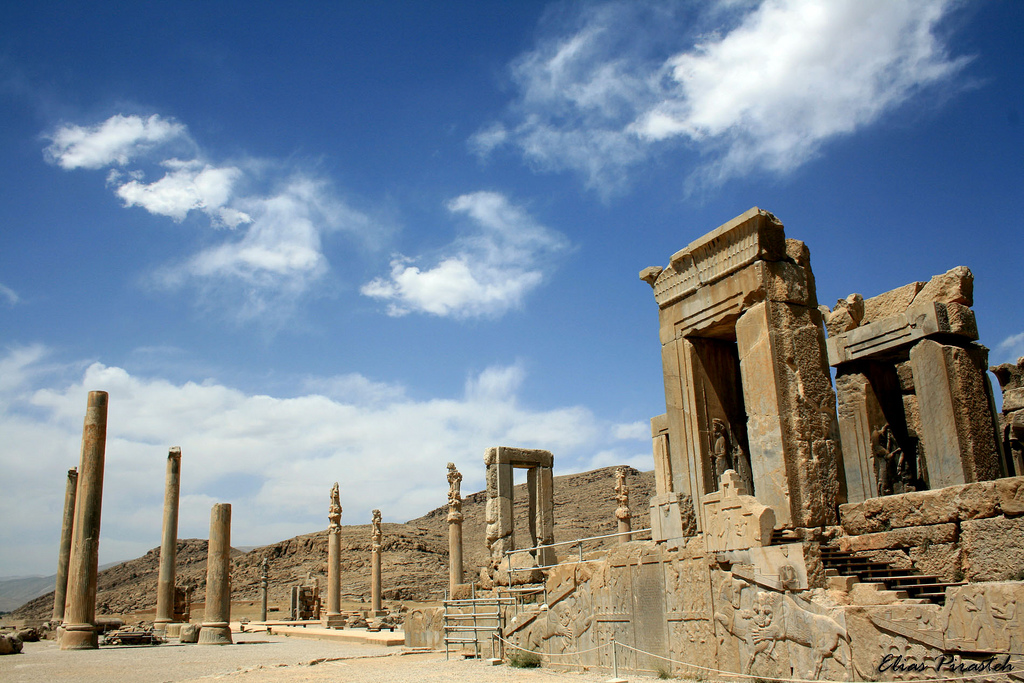
Persepolis, meaning „City of Parse”, was the ceremonial capital of Achaemenid Empire ruling the Middle East and territories beyond it from 550 to 330 BCE. The royal palace was to be a symbol of greatness, glory, and a center for various festivals and celebrations, especially Nowruz, i. e. New Year, and for receiving the envoys from other nations.
Day 03 Pasargadae / Isfahan
Breakfast at the hotel
Drive to Isfahan with a short stop in Pasargadae to visit the tomb of Cyrus the great. Arrival, check in and installation at your hotel in Isfahan.
Overnight at the hotel.
Pasargadae: Derived from the name of a major Persian tribe, meaning „the throne of Pars”, a splendid monument from Achaemenid Empire (330 – 550 BCE). Pasargadae is another testament to the magnificence of such ancient world power ordered to be built by Cyrus the Great (559 – 529 BCE), the founder of Achaemenid Dynasty. The rock tomb of Cyrus the Great is the significant monument remained in Pasargadae.
Isfahan „Who can claim to have seen the most beautiful city in the world while has not beheld the city of Isfahan?” André Malraux once said! To enjoy the city of Isfahan, or as the Iranian say „half of the world”, in its entirety, colossal squares, mosques, bridges and bazaars. Madrasa (religious schools) and caravanserais as well as awe-inspiring turquoise domes, tiles works, mugharnas (corbels), carvings, and calligraphy, all in all, are in the must-see list. Isfahan, possessing three UNESCO-registered World Heritage Sites, has maintained its beauty and originally like the three sister-cities of Florence, Barcelona and St. Petersburg. The time tunnel of „Aspehan”, i. e. the old name of the city of Isfahan, haunts the visitors in an Easatern city with the taste of the legends of „one thousand and one nights”. Just stand right in the middle of Nasqh-e Jahan (Image of the World) square to fully experience a mystic aura!
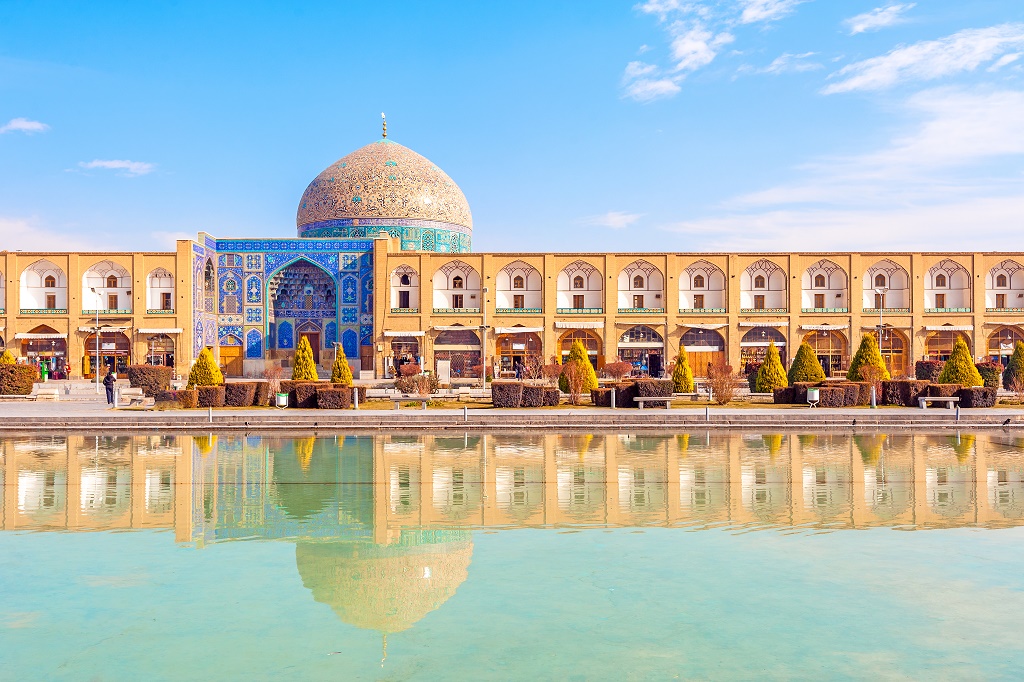
Historical Bridges Famous for different bridges on Zayande Rood (the river in Isfahan), Isfahan boasts the 11-arch Shahrestan Bridge, located in the East of city, dating back to the Sassanian era (224 – 651) as well as Si-o Se Pol (or Allah Verdi Khan Bridge) with 33 splendid arches and the 14-arch 133-meter Khaju Bridge, both built in the 17th century.
Day 04 Isfahan
Departure for a full day city tour in Isfahan: Naghsh – I – Jahan complex (Abbasi mosque, Sheykh Loft Allah mosque, Ali Qapou palace and Qeysariye bazaar), Chehl Sotun palace, Vank cathedral and Armenian corner and finally the Hasht Behesht palace.
Back to the hotel and overnight
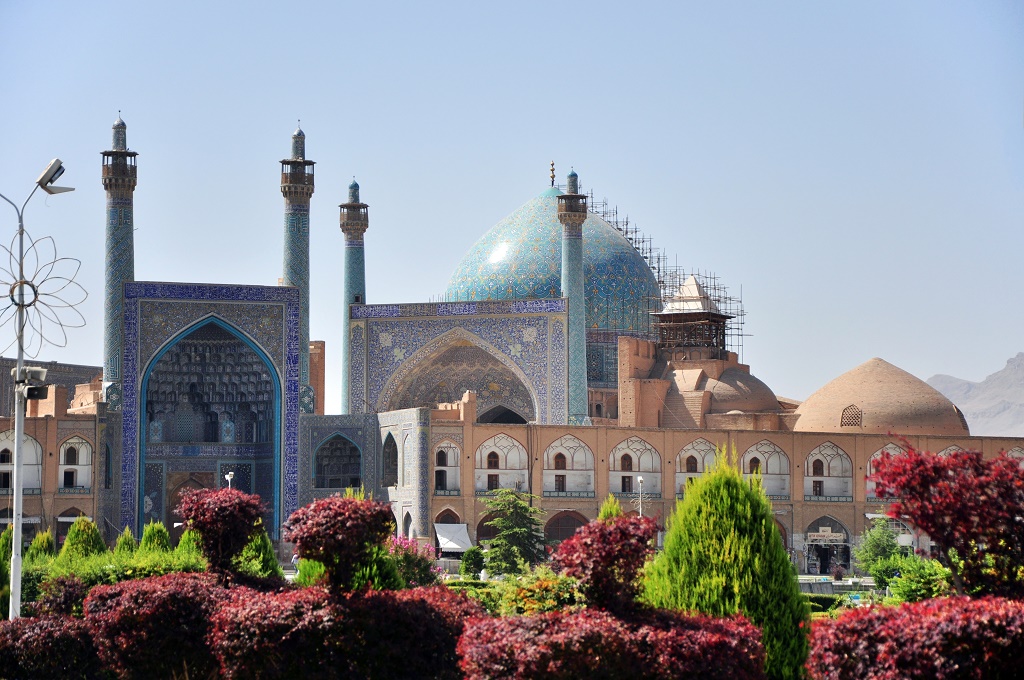
Abbasi Mosque, now Imam Mosque, the most significant monument in Isfahan and one of the most wonderful mosques in the Islamic world, built in the 17th century, is in the South of Nasqsh-e Jahan square. The exquisite design, haft-rangi (7-colored) tilework, and elaborate calligraphy immerse the visitors in pure spirituality.
Sheikh Loftollah Mosque: constructed from 1602 to 1618, named after the famous Shiite cleric. Sheikh Lotfollah Mosque is located in the east wing of Naqsh-e Jahan Square, used to be the private praying place for the royal family. Unlike usual four-iwan mosques, it has no minarets and courtyard and to enter it, one has to climb some steps.
Ali Qapu Palace meaning „Sublime Portal”, situated in the west side of Naqsh-e Jahan Square, served as an entryway to royal palaces and gardens beyond. All Qapu was an elevated terrace fronting the square where Safavid kings and royalties used to sit to behold the events. Chehel Sotoun Palace Pavilion: Just a few-minute walk from Naqsh-e Jahan Square, the beautiful palace was completed during the reign of Shah Abbas II in 1666. With a terrace-like hall with 18 elaborately decorated huge wooden pillars and a mirror hall with two pillars and their image in the large pool in front of the palace. Chehel Sotoun is a home to a stunning collection of frescoes and miniatures.
Vank Cathedral: One of the most important Armenian cathedrals in Iran of the 17th century, located in Jolfa district of Isfahan. Vank Cathedral was constructed when Shah Abbas I, the Great, displaced a large number of the Armenian from Northwest of Iran (especially Jolfa, now in East Azerbaijan) to Isfahan. The cathedral enjoys the most amazing frescos depicting some scenes of religious history particularly the life of Jesus Christ as well as a museum with extremely valuable objects like the smallest bibles in the world!
Day 05 Tehran
Early breakfast at the hotel, then drive to Tehran.
On the way, visit of Kashan city: Boroujerdi old house, Sialk hill and FIN garden.
Arrival Tehran, check in and installation at your hotel
Overnight at the hotel
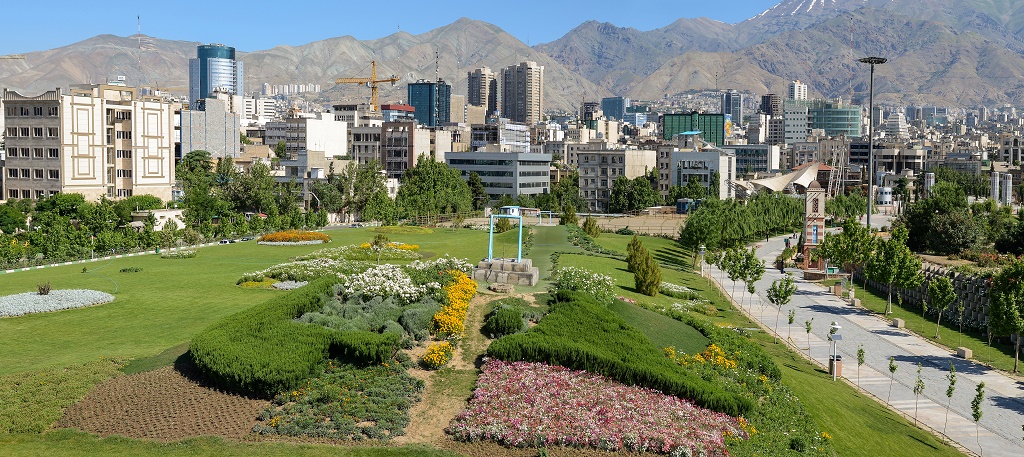
Around 228 years ago, on the first day of the Iranian New Year, the founder of the Qajar dynasty declared Tehran the new capital of the nation. Just a few centuries ago, Tehran was an unknown small village which was not even as large as the city of Rey the name of which has been mentioned in Torah and the age and beauty of which was tantamount to those of Babylonia, but now Rey is a part of greater Tehran, the largest city of Iran. Today, Tehran comprises Qajar-remained ancient neighborhoods and modern high-rise buildings and streets, as well as museums, art galleries, cinemas, palaces, gardens, abbeys, fireplaces, churches, mosques, parks, cafés, hotels, and bazaars.
Day 06 Tehran
Breakfast at the hotel
Proceed with a full day city tour of Tehran: Golestan Palace, the archeological section of the national museum, Crown – Jewels museum, Carpet museum, Milad tower.
Back and overnight at the hotel
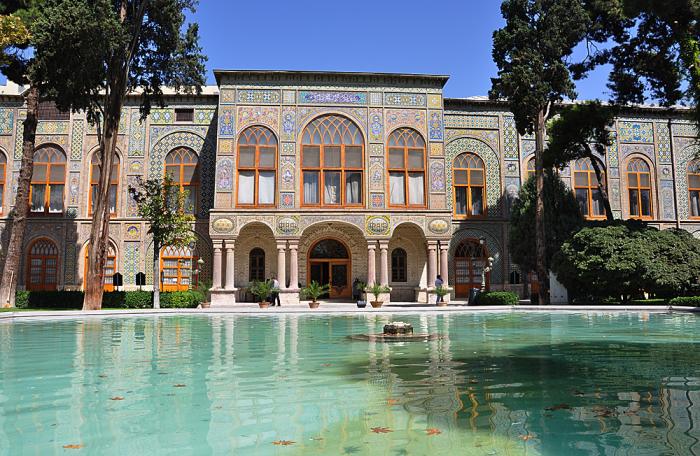
Golestan Palace is the oldest and most magnificent palace of Tehran, dating from 16th century, a UNESCO registered World Heritage Site. Goleastan Palace is located in the downtown close to Tehran Grand Bazaar in the heart of Old Tehran. This palace has been home to many contemporary historic events in Iran such as ratification of first constitution in 1906.
Crown Jewels Museum, as one of the most valuable and most unique museums in the world, founded in 1959. Crown Jewels Museum contains the jewels collections from Iranian former kings and members of the royal families. This priceless collection is a source of support for Iranian money and includes various kinds of jewels the most famous of which are Dary-e Noor (lit. Sea of Light) diamond, Takht-e Tavous (Peacock Throne), Jeweled Globe, Kiani Crown, and Pahlavi Crown.
The Carpet Museum which is home to some of the best Persian Carpets was founded in 1978. Designed like a carpet loom, encompassing 135 marvelous pieces of carpet from various regions of Iran, the museum also is a treasure house for books related to art in Persian, Arabic, English, French, and German languages as well as films on carpet weaving and Persian handicrafts.
Day 07 Tehran
After breakfast at the hotel, check out and proceed for a visit to the Niavaran palace in Tehran. In the afternoon, transfer departure to the airport.
Including:
- Accommodation at different hotels on bed and open buffet breakfast basis
- All transportation by air-condition motor coaches or minibuses
- All entrance fees for visiting places listed on the itinerary
- Mid-day refreshment
- English speaking tour guide or Hungarian speaking guide as a supplement will be added